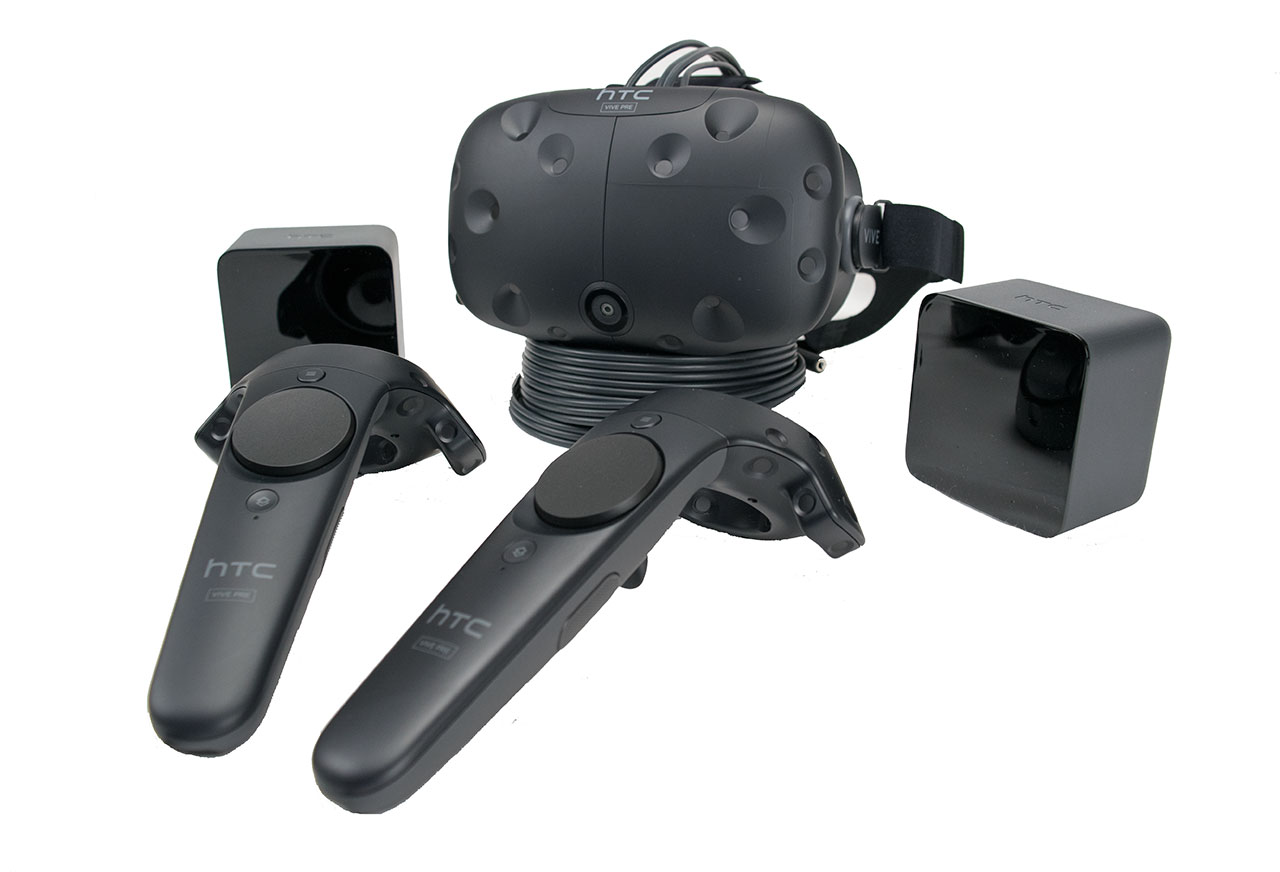The History Of Virtual Reality
2016 - HTC Vive Pre And Vive
Valve and HTC had maintained for most of 2015 that the Vive would ship that year. In December, HTC announced it would be delaying the Vive release until 2016 due to a "breakthrough" that had just been made with the hardware. At CES 2016, HTC revealed the Vive Pre with much more refined construction and a whole new "Chaperone" system that activates the front facing camera on the headset.
HTC also introduced "Mura correction," which helps correct the image warping on the outer edges of the screen. The Vive Pre is a pre-production developer kit that is very close to the final hardware. The consumer edition, which starts shipping on April 5, 2016, features a slightly improved head strap and stickier grips on the bottoms of the wand controllers. The HTC Vive will also interface with your cell phone via Bluetooth, so you will be able to accept calls and texts without taking the headset off.
MORE: Virtual Reality Basics
MORE: Virtual Reality in the News
MORE: All Virtual Reality Content
Follow us on Facebook, Google+, RSS, Twitter and YouTube.
Get Tom's Hardware's best news and in-depth reviews, straight to your inbox.
-
Nuckles_56 Thanks for such an informative read, I never realized that the history of VR went so far back and that there were so many units in the 1990's as wellReply -
Virtual reality has no future just like no one cares about 3D TV. Sounds cool but it is meh. Toms hardware should move on and talk about something else.Reply
-
deathcall666 Youre wrong freak777power , 3D tv fails because television itselft is a dying industry. Older men uses tv more frequently the teenagers and they cant make the diference between a 3D or old tube TV anyways.Reply
Pc gaming is however not dying , and VR is just begining a new era. -
stackedoverpass @deathcall666 No its not like it. 2D sales in the cinema dwarf 3D gimmick tickets. The same analogy can be applied on VR. When 3D TVs came out, TV were booming and big and next frontier seemed to be 3D. VR going to be flop like LCD watchesReply -
cats_Paw VR is still in its infant stages.Reply
For VR to be FULLY inmersive we need:
1. eye tracking for realistic viewing angles
2. high fidelity panels (LED and OLED are not yet).
3. A way to be able to "move" in the environment (some projects are out there, not done yet).
4. Kinetic gloves that will allow us to "feel" something we touch/pick up in a game.
5. Accurate positinal audio.
6. near 0 latency.
So, its looking good? yes Its going forward? Yes.
Are we there yet?
Not even close. -
hdmark I think it really depends on how you view VR. If you look at it for purely gaming... I don't see it being big just yet. another few years when its cheaper maybe, but not yet.Reply
But where most people are wrong when they compare VR to 3D TV's is that VR has a HUGE application base outside of gaming. Industries around the world are already using VR and the more developed VR and AR get, the more applications it will be used for.
The two major examples I keep thinking of in my head are in the medical and construction fields. Im 99% sure they are already using VR hooked up with robotics to do some surgeries. and in the construction field... well imagine workers wearing hardhats with VR . Not only would it be able to alert them quicker of dangers, they would also have readouts of what they are working on. They don't need to go check blueprints anymore and diagrams, if they have a 3D model in front of them where everything should go -
IInuyasha74 Reply17709783 said:VR is still in its infant stages.
For VR to be FULLY inmersive we need:
1. eye tracking for realistic viewing angles
2. high fidelity panels (LED and OLED are not yet).
3. A way to be able to "move" in the environment (some projects are out there, not done yet).
4. Kinetic gloves that will allow us to "feel" something we touch/pick up in a game.
5. Accurate positinal audio.
6. near 0 latency.
So, its looking good? yes Its going forward? Yes.
Are we there yet?
Not even close.
Actually in one form or another we have all of that except the kinetic gloves. What really needs to happen is it all needs compacted down into one device. That is starting to happen, but still a little ways off. -
TX_Tech A local arcade had the Virtuality 1000CS back in the 90s, I remember playing it a few times, but it was expensive per game, so not as much as I wanted.Reply
It wasn't perfect, but it was better than much of what came next. -
TX_Tech ReplyThanks for such an informative read, I never realized that the history of VR went so far back and that there were so many units in the 1990's as well
I'm 40, so I remember many of these devices. The younger 20 year olds today often think this is all new, but it really isn't. The devices have better resolution and wireless is a thing now, but the old problems still exist.
The real dream is the Holodeck, I remember 1987 and watching ST:TNG in first run and being wowed by that, thinking "my lord, that would be amazing, I want it!", but as time has marched on, I've come to accept that it won't happen in my lifetime.
VR is a nice idea, but I think execution is going to be the problem. Because everyone has a monitor and most people don't have VR, it won't get the type of broad support it needs to become something. And frankly, I don't think most people WANT to put a big device on their heads.
